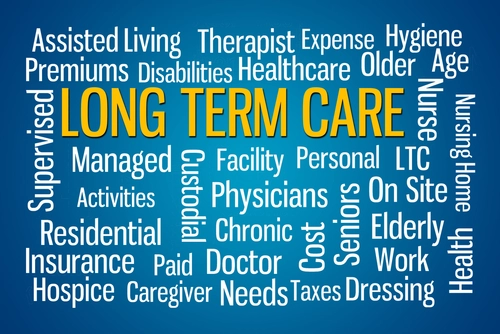EM Coding Alert
Prepare for Big CPT® E/M Changes Heading Your Way

Codes, times, guidelines all poised for overhaul. For some time now, the coding community has been expecting major revisions to the way E/M services are documented, though no one has been able to say for sure what they might look like. Now, with the publication of the 2019 CPT® Editorial Summary of Panel Action, the nature of those changes is becoming clearer. Here are the four major difference you can expect to see in E/M coding beginning January 1, 2021. And even though the changes could change yet again before they are implemented, it’s a good idea to start getting ready for them now. 1) 99201 Will Be No More The first big change outlined in the Summary is the deletion of 99201 (Office or other outpatient visit for the evaluation and management of a new patient, which requires these 3 key components: A problem focused history; A problem focused examination; Straightforward medical decision making …). 2) History, Exam Components, and MDM to Also Receive Revision The Summary also calls for “removing history and examination as key components for selecting the level of E/M service but adding the requirement that a medically appropriate history and/or examination must be performed in order to report codes 99202-99215.” This explains why CPT® is deleting 99201. “Since 99201 and 99202 have the same level of medical decision-making [MDM], when you remove the levels of history and exam from the descriptors, the codes become virtually indistinguishable, hence the deletion of 99201” notes Kent Moore, senior strategist for physician payment at the American Academy of Family Physicians. Additionally, “with the new emphasis on MDM as one of two ways to select office visit codes, a lot of work has gone into better describing and distinguishing levels of MDM for clarity. This extends to revising the titles of the three MDM elements,” Moore notes. Those changes include: Such changes seek to add some clarity to the often-gray areas surrounding calculating MDM complexity. 3) The Times They Are A-Changin’ … As we already know from the Medicare Physician Fee Schedule (MPFS), beginning on January 1, 2021, Medicare plans to let you choose E/M levels based on the level of MDM your provider engages in during the encounter or the total time of the encounter. This has led CPT® to replace the words “typical time” with the words “total time spent on the day of the encounter,” along with changing the times for each of the codes. “The ‘typical time’ currently included in the code descriptors only reflects face-to-face time. But since most office visits have some pre- and post-visit time involved, too, the change to ‘total time’ on the date of the encounter will also include pre- and post-visit time that day,” says Moore. The Summary does not say what the new times will be, however. 4) … While Guidelines Get a Big Overhaul Lastly, the 2021 CPT® manual will restructure E/M guidelines into three sections: In delineating the different E/M services this way, CPT® is making sure there is “no conflicting information between the different sets of guidelines.” This means we should expect more specific guidelines that only apply to 99202-99215, including definitions of MDM terms and a revised MDM table. Coding caution: The preface to the Summary states, “Codes are not assigned, nor exact wording finalized, until just prior to publication.” Additionally, “all these changes aren’t scheduled to become effective until January 1, 2021,” Moore notes as a reminder. Fortunately, even with the incomplete information provided by the Summary, “there is plenty of time for users of the codes to get educated on the changes and how they will fundamentally alter the way office visit codes are defined and selected,” concludes Moore. This means using the time to understand “how these codes would change the way you document the visit and how you would revise your electronic health record [EHR] to accommodate the options of using MDM or time and decide which of the two methods will work best for an individual patient or your practice as a whole,” says Mary I. Falbo, MBA, CPC, CEO of Millennium Healthcare Consulting Inc. in Lansdale, Pennsylvania. Additionally, “it is important to note that these are CPT® changes, and any payer contracts involving Medicare or payers that follow Medicare guidelines may require calculation in another way. Moving forward, it might be a good idea for providers and staff to be informed of the upcoming changes to both CPT® and Medicare rules and then follow additional announcements from both the AMA and Medicare very closely,” Falbo advises. For the full February 2019 CPT® Editorial Summary of Panel Action, go to www.ama-assn.org/system/files/2019-03/february-2019-summary-panel-actions_0.pdf.
Related Articles
EM Coding Alert
- News You Can Use:
Prepare for Big CPT® E/M Changes Heading Your Way
Codes, times, guidelines all poised for overhaul. For some time now, the coding community has [...] - Critical Care:
Got Critical Care Questions? We've Got Answers.
Know how to report 99291 and +99292 correctly in or out of the ED. You [...] - E/M Auditing:
Use CBR Data Effectively With These 3 Hints
These MAC reports will help you keep your E/M coding in line. Are you paying [...] - You Be the Coder:
Go Beyond E/M to Capture This FBR, Epistaxis Service
Question: Our provider just saw an established patient with a nosebleed. The patient’s mother explained [...] - Reader Question:
Determine New vs. Established by Service, Not E/M
Question: A patient came in for an E/M service on February 19, 2019. The patient [...] - Reader Question:
Locate This Code for Correct Consult Choice
Question: Our surgeon saw a non-Medicare patient in the office for a consultation, and then [...] - Reader Question:
Review the Answer to This ROS Recording Question
Question: There is a debate in our office about who can record an ROS. Can [...]




